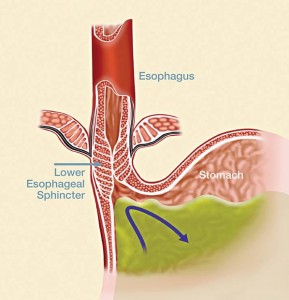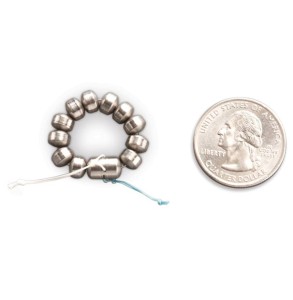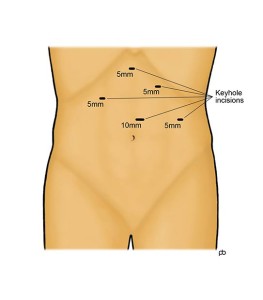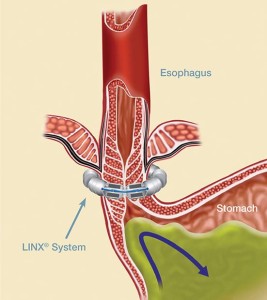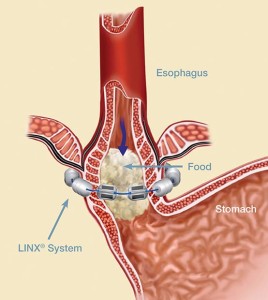Click images for a larger version and full description
What is the LINX® Magnetic Bead Ring operation for acid reflux?
The LINX® Reflux Management Symptom is a small, flexible band of interlinked titanium beads with magnetic cores. The ring is placed around the lower end of your oesophagus (gullet), just above the junction between the oesophagus and the stomach. The magnetic attraction between the beads keeps the valve at the lower end of the oesophagus closed. The ring is designed so that it opens when you swallow and it allows food and drinks to pass into the stomach. It closes after you have finished eating and prevents backflow of acid from the stomach into the oesophagus. But, it can usually open during normal belching and allows vomiting.
The procedure is done by laparoscopy (keyhole surgery), under general anaesthesia. The operation usually takes about 45-60 minutes. You may be able to go home on the same day, or after an overnight stay in hospital, depending on your recovery.
Can I eat normally after the LINX® Magnetic Bead Ring operation for acid reflux?
There is no restriction on eating after the LINX® magnetic bead ring has been placed. You can eat normal food. You should eat slowly and chew your food really well. If there is any discomfort or difficulty to swallow, it can be helpful to have some water or a fizzy drink. Unlike a fundoplication, you do not have to be restricted to sloppy food for several weeks after the operation.
What is the success of the LINX® Magnetic Bead Ring operation for acid reflux?
LINX® has been available for over 10 years now. Studies have shown that 90-95% of patients are satisfied with control of symptoms and they have improved quality of life. About 85% of patients are able to stop taking PPI medicines.
What are the risks with the LINX® Magnetic Bead Ring operation for reflux?
Most people may a straightforward recovery and serious complications are rare. But all keyhole (laparoscopy) operations on your abdomen (tummy) carry some risks. The most important risk after LINX® insertion is difficulty to swallow. Studies have shown that about 10% of patients have difficulty to swallow after one year, and about 5% have difficulty to swallow after 3 years. If the difficulty is only mild, then no treatment is required other than avoiding certain types of food that cause problems. For more troublesome difficulty, endoscopy and dilatation (stretching) of the oesophagus may be needed. If the difficulty to swallow is severe and is not improved by dilatation, then it may become necessary to remove the ring. About 2-4% of patients need to have a second operation to remove the ring. Also, you may get gaseous bloating of the abdomen, excess flatulence and some difficulty to belch and vomit. There is a worry that the ring may erode through the wall of the oesophagus or it may move out of position. There are very few reports of such problems, so the risk seems to be very small. But, please remember that LINX® is a relatively new procedure and long-term information is sparse. There should not be any problem in going through security at airports. You will be given an implant card. But, you should be very careful about having MRI scans because of the magnetic forces in MRI. Some MRI machines may be safe, but make sure that you inform all doctors and radiographers about your LINX®.


